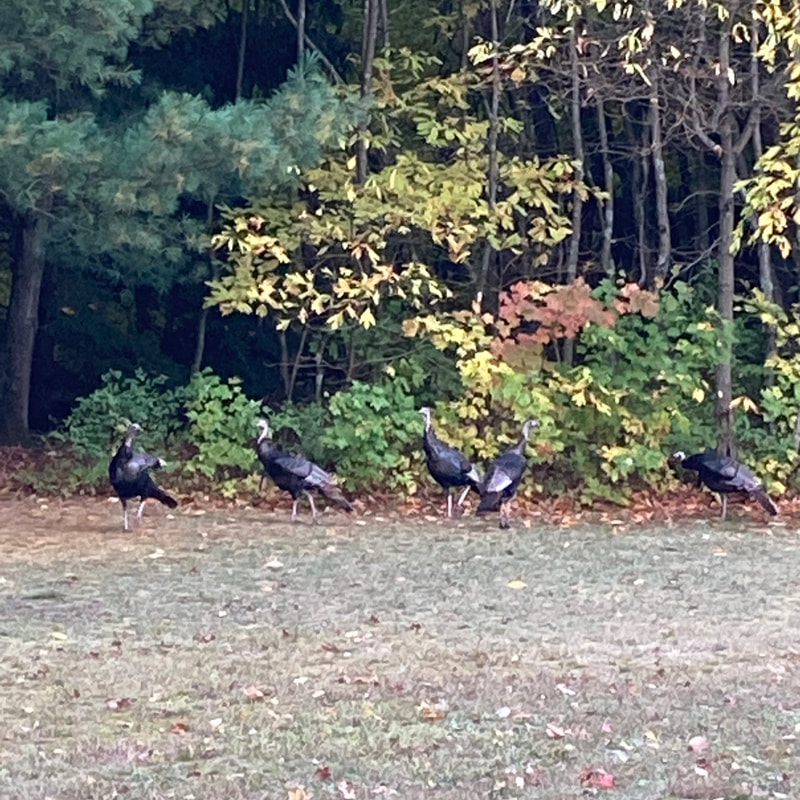|
Photo and article by Donna Iverson When November arrives, my attention turns to turkey. Not the turkey I’m looking forward to on my Thanksgiving dinner plate. But the wild turkeys meandering along roads and highways in small flocks. Seemingly fearless, they waltz across the road while cars line up patiently waiting for them to pass. But get out of the car, to try to get a photo and they pick up their speed, moving at 15 to 25 miles an hour out of range. Wild turkeys are native to Michigan. They are a bird of many contradictions. Basically sociable, an individual turkey can become aggressive toward humans and attack. (If threatened, grab a broom or a hose) Spending most of their time scratching on the ground near woods, they can nevertheless fly at 55 miles per hour. While wild turkey numbers are growing and the flocks are moving into suburbia, it hasn’t always been so. In the late 1800s, wild turkeys had all but disappeared from the state. Logging had destroyed their habitat.In the 1950s, wildlife biologists began a reintroduction program in southwest Michigan. And now the wild turkey is no longer endangered. If you have wild turkeys in your yard, you are lucky. For one thing, they eat ticks. One turkey can eat 200 ticks a day. They feed on nuts, berries, insects, snails, and grains, like corn and soybean. Acorns are a special favorite. Predators include raccoons, skunks, opossums and occasionally crows and coyotes. Wild turkeys are highly intelligent and have excellent vision and hearing even though they have no ears. Scientists report they can make 20 different vocalizations which are recognized by others in the pack. They are also curious and polygamous. Surprisingly, they sleep in the top of trees. In the spring, an alpha male will mate with nearly every hen in the flock. Hens lay eggs in ground nests often near trees. Young turkeys are extremely vulnerable to prey until they can fly, about two weeks after hatching. A young turkey is called a jake. As winter approaches, the flock will break up into smaller groups ..the hens, the toms and the jakes. They have a hard time surviving in deep snow, so are mostly found in southern Michigan and not in the UP. Their home range is one to four miles in circumference. Hunting season for wild turkeys began September 15 and lasts till November 14. A state license is needed. For more information on attracting wild turkeys to your property, check out https://www2.dnr.state.mi.us/publications/pdfs/huntingwildlifehabitat/landowners_guide/Resource_Dir/Acrobat/Wild_Turkeys.PDF
0 Comments
Your comment will be posted after it is approved.
Leave a Reply. |
Archives
July 2024
Categories |

 RSS Feed
RSS Feed